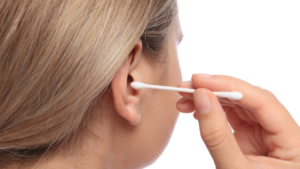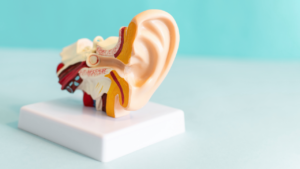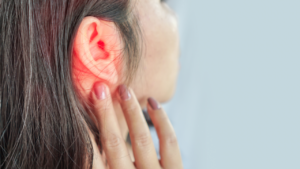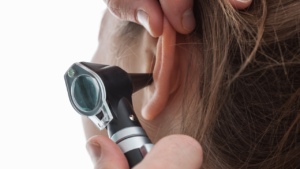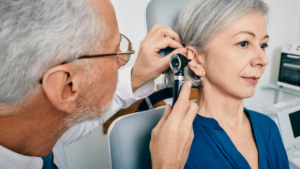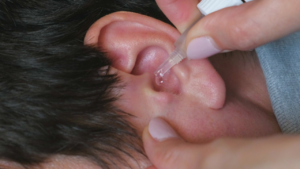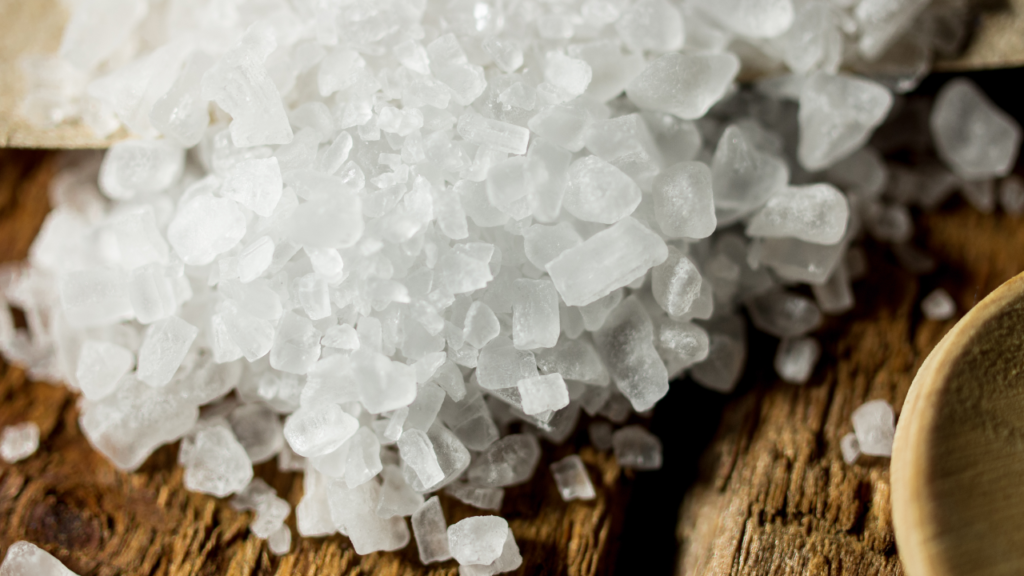
Have you ever wondered if salt water can be used to clean your ears? In this article, we will explore the connection between ear wax and salt water. We will answer questions such as: does salt water dissolve ear wax? How does salt water affect the ear canal? And what are the proper steps to clean ear wax using salt water? We will discuss alternative methods for removing ear wax, so stay tuned to learn more about this common household remedy.
Key Takeaways:
- Salt water can be an effective and natural way to clean excess ear wax.
- The proper ratio for salt water solution is 1 teaspoon of salt to 1 cup of warm water.
- Salt water can cause irritation and potential damage to the ear canal if not used properly, so it’s important to follow the correct steps for ear wax removal.
What Is Ear Wax?
Ear wax, also known as cerumen, is a natural substance produced by the ear canal to protect and lubricate the ear.
Ear wax plays a crucial role in maintaining ear health by trapping dust, dirt, and other foreign particles, preventing them from reaching the delicate structures inside the ear. Its composition includes a combination of secretions from sebaceous glands and sweat glands, along with dead skin cells. This mixture creates a sticky barrier, acting as a defence mechanism against harmful microorganisms while also moisturising the ear canal walls.
Proper ear wax management is essential to avoid issues such as impaction, which can lead to hearing problems and discomfort.
What Is Salt Water?
Sea water is a solution made by dissolving salt in water, commonly used for various purposes including wound cleansing and gargling.
The composition of sea water usually consists of sodium chloride crystals that dissolve in water, creating a saline solution. This solution is known for its antiseptic properties, making it effective in cleaning wounds and promoting healing. In healthcare, sea water is also utilised for nasal irrigation to relieve congestion and sinus issues.
Sea water is a natural and cost-effective cleaning agent, ideal for disinfecting surfaces and removing tough stains. Many people incorporate sea water in their daily hygiene routines, such as using it as a mouthwash or as a natural alternative to commercial cleaning products.
Regarding ear care, sea water plays a significant role in ear hygiene. A saline solution can help soften earwax buildup, making it easier to remove and prevent ear canal infections.
How Does Salt Water Affect Ear Wax?
The application of salt water to the ear can help soften ear wax, making it easier to remove and improving the process of ear cleaning.
When salt water is introduced into the ear canal, it works by breaking down the hardened ear wax, which can then be naturally expelled from the ear. The salt in the water helps to draw out moisture from the wax, softening it and easing its removal without causing any irritation or discomfort.
Salt water is also beneficial in maintaining ear hygiene as it has antibacterial properties that can help prevent infections. Regularly using salt water for ear cleaning can contribute to overall ear health and prevent common ear issues.
Does Salt Water Dissolve Ear Wax?
Sea water can effectively soften ear wax, aiding in its removal and contributing to better ear health and hygiene.
Does Salt Water Irritate the Ear Canal?
Whilst salt water is generally safe for ear cleaning, improper use or concentration levels may lead to irritation of the ear canal, emphasising the importance of following safety guidelines.
An overabundance of salt in the water can cause stinging or burning sensations in the ear, and in some cases, exacerbate existing inflammation or even lead to infection.
It is crucial to ensure that the salt water solution is at a safe and gentle level for use in the delicate ear canal, avoiding high concentrations that could cause harm.
To mitigate the risks, always use lukewarm water to dissolve the salt thoroughly before application, and never force water into the ear canal forcefully as it may result in damage.
How to Use Salt Water to Clean Ear Wax?
To clean ear wax with salt water, it is essential to follow proper procedures that involve gently irrigating the ear canal with a salt water solution.
Start by preparing the salt water solution using warm water and a teaspoon of salt; ensuring the temperature is comfortable for the ear.
- Using a clean ear dropper, carefully draw up the salt water solution.
- Lie on your side with the affected ear facing up.
- Gently pull the outer ear back and up to straighten the ear canal.
- Slowly squeeze the salt water into the ear canal, allowing it to fill the space.
- Remain in this position for a few minutes to let the solution soften the ear wax.
Remember to always consult a healthcare professional if you experience pain or impaired hearing after attempting this method.
What Is the Proper Ratio of Salt to Water?
The proper ratio of salt to water for ear cleaning purposes is crucial to ensure the effectiveness of the solution and avoid any adverse effects, emphasising the importance of following ear cleaning precautions.
For an ideal ear cleaning solution, the recommended salt-to-water ratio is approximately 1 teaspoon of salt to 1 cup of warm water. This balance helps to create a gentle yet effective cleaning mixture. To maintain this correct ratio, it is advisable to use a measuring spoon to ensure accuracy. When preparing the solution, always stir well to ensure the salt dissolves completely, as undissolved salt particles can be irritating to the delicate ear canal lining. It is imperative to emphasise the significance of using lukewarm water, as extreme temperatures can cause discomfort or even damage to the ear.
What Are the Steps to Clean Ear Wax with Salt Water?
Cleaning ear wax with salt water involves simple steps such as preparing the solution, gently irrigating the ear canal, and ensuring proper drainage for optimal ear health and hygiene.
It is crucial to mix warm water with a sufficient amount of salt to create the saline solution. This solution helps soften the wax buildup, making it easier to remove.
Next, using a clean ear dropper, slowly and gently instil the solution into the ear canal, allowing it to sit for a few minutes to break down the wax.
Proper drainage is essential after the irrigation process – tilt your head to let the solution and loosened wax flow out naturally. Remember to never forcefully push objects into the ear to avoid injury or infection.
Are There Any Risks or Side Effects of Using Salt Water for Ear Wax Removal?
Whilst salt water is generally safe for ear wax removal, improper techniques or contaminated solutions may pose risks such as ear infections, eardrum damage, underscoring the importance of ear safety measures.
When using salt water to remove ear wax, it is crucial to ensure that the water is distilled or sterilised to avoid introducing harmful bacteria to the delicate ear canal. Ensuring proper temperature of the water is also important to prevent burning or discomfort in the ear. It is advisable to consult a healthcare professional before attempting any ear wax removal method, especially if there is a history of ear issues or if the individual is prone to infections. Following these precautions can help maintain ear health and prevent potential complications.
Can Salt Water Cause Ear Infections?
Whilst rare, improper use of salt water for ear cleaning can potentially introduce bacteria or irritants, increasing the risk of ear infections, necessitating the need for adherence to proper ear cleaning tips.
When cleaning ears, it is crucial to avoid using harsh or unsterilised instruments that could cause abrasions or introduce pathogens into the ear canal. Poking or prodding the ear with objects like cotton buds can push wax deeper, potentially leading to blockages or damage.
Proper ear cleaning techniques involve gentle washing with warm water or saline solutions specifically designed for ear care. Remember to tilt the head to allow excess fluid to drain out naturally, and never insert anything smaller than your elbow into the ear.
Can Salt Water Damage the Eardrum?
Direct pressure or forceful irrigation of salt water into the ear canal can potentially damage the delicate eardrum, highlighting the importance of observing ear cleaning precautions to prevent any harm.
When attempting to clean your ears, it is crucial to remember that the eardrum is a sensitive and vital part of your auditory system.
Excessive pressure from irrigation tools or even using simple cotton buds improperly can lead to serious injuries.
To protect your ears, it is advisable to avoid inserting any objects deep into the ear canal, as this can push earwax further inside or cause accidental damage.
Can Salt Water Cause Allergic Reactions?
Individuals with known sensitivities or allergies to salt water may experience allergic reactions when using it for ear cleaning, necessitating the consideration of alternative ear cleaning methods.
Common allergic reactions to salt water in the ears include redness, itching, swelling, and irritation, particularly for those with sensitive skin or existing allergies.
For those seeking alternative methods, gentle solutions like vinegar or hydrogen peroxide mixed with water can be effective and less likely to cause adverse reactions.
Using specialised ear drops or seeking guidance from a healthcare professional can help in maintaining ear hygiene without triggering allergies.
Alternative Methods for Removing Ear Wax
Along with salt water, alternative methods for removing ear wax include over-the-counter ear drops, ear irrigation, and ear candling, with some individuals opting for medical advice on the best approach.
Over-the-counter ear drops are easily accessible at local chemists and are a popular choice for softening ear wax before removal. They often contain hydrogen peroxide or liquid paraffin to break down the wax and help it drain out naturally.
Ear irrigation, on the other hand, involves using a syringe to flush out the ear canal with warm water or saline solution, loosening and dislodging the wax. Another unconventional method, ear candling, involves placing a hollow cone-shaped candle in the ear and lighting it to create a vacuum effect that supposedly draws out the wax.
Whilst these methods are used by people worldwide, it is essential to remember that each person’s ear anatomy and wax build-up are unique. Therefore, seeking personalised advice from a healthcare professional, such as an ear specialist or an audiologist, is recommended before trying any of these methods. They can assess your condition and provide tailored recommendations for safe and effective ear wax removal based on your specific needs and concerns.
Over-the-Counter Ear Drops
Over-the-counter ear drops offer a convenient and accessible method for softening ear wax, requiring proper precautions to ensure safe and effective ear cleaning practices.
When using these drops, it is crucial to tilt your head to the side and gently pull the outer ear up and back. This position allows the drops to seep deeply into the ear canal, where they can effectively soften the wax. Remember to refrain from using cotton buds or inserting any objects into the ear, as this can push the wax further in or even cause potential damage to the eardrum.
The benefits of regular use of these ear drops include promoting better ear health, reducing the risk of blockages and discomfort, and maintaining good hearing hygiene. By incorporating them into your routine, you can effectively manage ear wax build-up and prevent potential complications associated with excessive wax accumulation.
Ear Irrigation
Ear irrigation, performed by a healthcare professional or ear specialist, involves the gentle flushing of the ear canal with a controlled stream of water to remove excess earwax build-up.
During the process, the specialist uses specialised equipment to ensure the water flow is controlled and the ear is not damaged. The gentle stream of water helps to soften the wax, making it easier to flush out without causing discomfort or harm.
Ear irrigation is particularly effective when dealing with stubborn or impacted earwax that cannot be easily removed with at-home methods like drops or earwax removal kits.
Ear Candling
Ear candling, a contentious home remedy, involves placing a hollow candle in the ear and lighting it to create a vacuum effect, purportedly drawing out ear wax and impurities.
Despite its popularity in some alternative medicine circles, ear candling is not supported by scientific evidence and has been criticised by healthcare professionals. The technique dates back to ancient civilisations but has since raised concerns due to the risks involved, such as burns, perforated eardrums, and the potential for candle wax residue to enter the ear canal.
Proponents claim that ear candling can help with ear infections, sinus pressure, and even stress relief, but these claims have not been substantiated through research. It’s essential for individuals considering ear candling to consult with a healthcare provider and explore safer, evidence-based ear cleaning methods.

